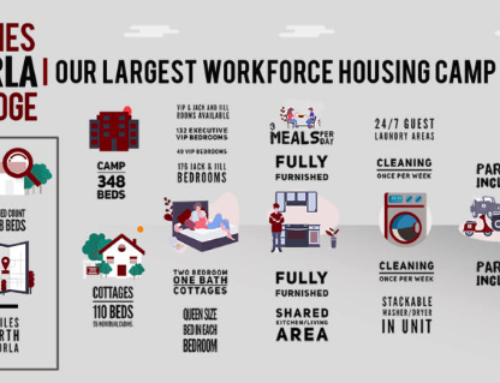Retaining quality talent is a crucial part of running any business in the modern world. After all, how do you expect to succeed in fulfilling the goals you have for your business if you can’t rely on your team to execute the necessary steps? Since the concept is so simple, you’d think more business owners and managers would have figured out how to hold on to their top performing staff members. However, the best employees often make their way to the door before employers can figure out how to stop them.
This is why we talked to three true experts in managing talent: Tim Sackett, Alexander Kjerulf, and Ryan Estis.
Read on to learn more about these experts and what they have to say about keeping workers happy without bumping their pay grade.
Tim Sackett
 Tim Sackett is a human resources pro with over 20 years of experience, a Master’s in HR, and a SPHR certification. His previous experience includes high level HR management with national brands like Applebees. Needless to say, he knows the ins and outs of employee satisfaction pretty well.
Tim Sackett is a human resources pro with over 20 years of experience, a Master’s in HR, and a SPHR certification. His previous experience includes high level HR management with national brands like Applebees. Needless to say, he knows the ins and outs of employee satisfaction pretty well.
When we asked Tim about his thoughts on employee satisfaction and its relationship to pay, he came back with five big tips for keeping workers happy without using the green poultice.
Tim’s tips:
1. Pay Still Has to be Fair
Before diving into strategies to keep employees happy, it’s important to recognize that money does still count for something.
“First, you have to be at least around the market in terms of pay,” Sackett said. “Or anything you do to increase satisfaction is just a waste of resources.” You simply can’t pay your employees less than they’re worth and still expect them to be happy and productive.
2. Trim the Fat
In the same vein, if you’re struggling to pay your employees fairly, consider dropping under performers to free up funds to compensate your quality employees properly. Refining your workforce by eliminating dead weight can be a enormously helpful strategy.
“Fire your underperforming employees and use that money to compensate the people who deserve it.” Sackett says.
3. Fine Tune Your Management Feedback
In any business, communication is key. Managers must give meaningful feedback to their employees if they have any hope for them to succeed.
“Basically, you need to force your managers to show they appreciate the work that is being done,” Sackett explains. Not only does this boost morale by making employees feel valued, it also opens up a dialogue that can help make everyone more efficient.
4. Hire Up
Sackett’s fourth tip has the potential to be a secret weapon for hiring managers everywhere.
“Hire people who come from a worse work environment than you have,” says Sackett. “They’ll love your environment and scare your current employees on how bad it is elsewhere!”
The next time you bring on a new hire, investigate applicants coming from a lower quality work environment than your own. You might be surprised at how adopting an employee from less fortunate circumstances can improve your own company culture.
5. Hone Your Efforts
As you pursue higher levels of employee satisfaction throughout your organization, it’s especially important to realize that you can’t individually target each employee in order to raise their happiness. Like many aspects of business, the 80/20 rule is quite instructive: about 20% of your workforce determines the satisfaction for the other 80%.
“We have to understand this isn’t about lifting the satisfaction of everyone,” Sackett says. “It’s about lifting the satisfaction of those influencers in your organization that are driving culture. Get those people to feel satisfied, and amazingly, everyone seems to be satisfied. Most organizational culture and satisfaction is driven by about 20% of the workforce.”
Alexander Kjerulf
 Alexander Kjerulf is an internationally known author and job satisfaction specialist. He’s also the founder of Woohoo Inc., a consultancy firm specializing in happiness at work. His clients include brands known worldwide, such as IBM, LEGO, Microsoft, and others.
Alexander Kjerulf is an internationally known author and job satisfaction specialist. He’s also the founder of Woohoo Inc., a consultancy firm specializing in happiness at work. His clients include brands known worldwide, such as IBM, LEGO, Microsoft, and others.
In fact, Alexander’s best selling book, Happy Hour is 9 to 5, has been translated into nine languages, including Chinese, Dutch, Spanish, and Vietnamese.
Clearly, he knows a thing or two about what it takes to keep employees happy in their positions. Here are his thoughts.
Alexander’s tips:
1. Always Be Fair
In concert with our first expert, Kjerulf warns that pay has to be fair if you want to keep morale high.
“Companies must absolutely give each employee a compensation that is fair compared to what their co-workers are getting and compared to the market,” Kjerulf says.
On the flip side, money does eventually top out in its ability to bring about satisfaction.
“Trying to make people happier, more motivated, or more productive by increasing their salaries or dangling ever bigger bonuses in front of them is doomed to fail,” Kjerulf explains. “In fact, it may even be counter-productive because it moves focus from the work to the pay check.”
2. Think Holistically
It’s no big secret that there’s a certain symbiosis or equilibrium that must be reached for a workforce to be satisfied. Tips and tricks are great, but it takes a myriad of factors operating in harmony to reach the end goal of employee satisfaction. Kjerulf sums it all up, saying,”So this is the moral: Pay people a fair salary and then make them happy by letting them do great work together with great people. That’s what really makes us happy at work.”
Ryan Estis
 After spending 15 years as an ad agency executive, Ryan Estis decided to parlay his experience assisting companies to connect with their customers and employees into a career in independent consulting and public speaking.
After spending 15 years as an ad agency executive, Ryan Estis decided to parlay his experience assisting companies to connect with their customers and employees into a career in independent consulting and public speaking.
Unsurprisingly, Ryan knows that there’s more to happiness than salaries and bonuses.
“Employee satisfaction and engagement goes way beyond compensation,” he says.
Rather than simply compiling a list of tips, Ryan took things one step further by assembling a series of questions for management staff to consider when dissecting the happiness amongst their company culture. Ask yourself these questions the next time you start seeing spirits fall. The more you ponder them, the more likely you are to discover a solution.
Ryan’s satisfaction questionnaire:
1. Growth and development
Continuing growth and development is one of the most important factors in the work satisfaction equation. After all, who wants to work for a company or in a position that feels like a dead end? Nurturing the professional growth of your employees can go a long way toward keeping them happy. Estis implores managers to ponder these questions in relation to personal growth and development:
• Are you invested in training and development?
• Are you mentoring and coaching employees?
2. Confidence in the future of the organization
We’ve already touched on the importance of communication between managers and employees, but transparency, an underlying value of good communication, is crucial in the manager-employee relationship too. And it’s not just the act of being transparent and honest that’s important. It’s the fact that honesty builds confidence in your company. If you’re unsure if the level of transparency in your organization is high enough, ask yourself the following questions:
• How transparent is the communication from leadership?
• Is the organization clearly aligned and pursuing shared goals?
• Is leadership clear about the strategy and commitment required to perform at high levels?
3. A sense of personal accomplishment at work
It’s well understood that people crave meaning in life. However, managers often forget this simple fact as they unsuccessfully attempt to keep employees happy while overwhelming them with menial tasks and mindless work. Consider these questions as you strive to give your employees’ work greater meaning:
• Are employees contributing to something larger than themselves?
• Is there a connection to a shared purpose?
4. Being connected to the organization’s values.
Birds of a feather flock together. Nobody likes to be the odd man out. This is especially true in the workplace. Employees will always be happiest when their goals and values are aligned with those of their employer and company. If you find yourself answering “no” to these questions, then it’s probably time to reevaluate your management:
• Are core values fully known and understood?
• Are they reinforced as daily habits?
• Are they embraced as standards by leadership?
Staying Satisfied
Now that we’ve heard from the experts, we’d like to hear your thoughts on how to improve employee satisfaction without resorting to monetary methods. How have you enhanced your employees’ satisfaction and company culture while staying out of the company coffers? Give us a shoutout on Facebook or Twitter and let us know!
Photo credits:
1. Photo via TimSackett.com
2. Photo via PositiveSharing.com
3. Photo via RyanEstis.com





